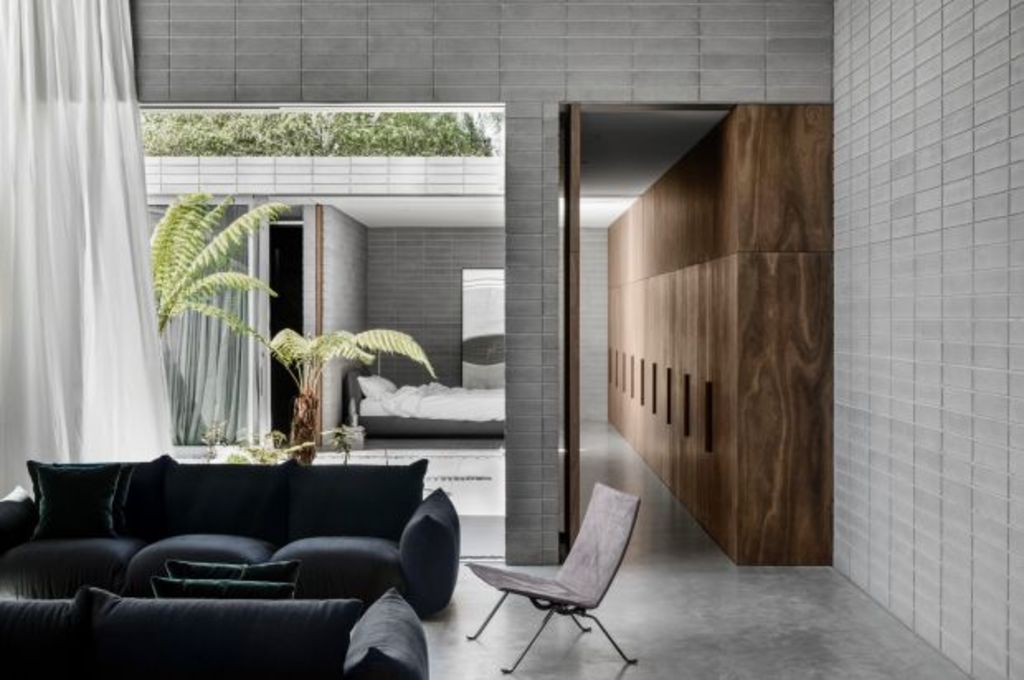Business in the front, party in the back: Architects create a stunning 'mullet house' in Prahran

Heritage renovations in densely populated urban contexts are a dimea dozen these days. Maximising the yield and opportunity of a block through a smart extension is usually a primary objective while maintaining respect for the original frontage.
It’s an approach I like to refer to as an architectural mullet – business in the front, party in the back.
Highbury Grove House in Melbourne’s inner-suburban Prahran – recently transformed by RITZ&GHOUGASSIAN – is defined by a street frontage of Federation-style cottages that are set in orthogonal rows and folded in among leafy suburb gardens. The “business in the front”.
The architects have addressed the building’s laneway that runs along its northern side by creating an architectural envelope that orientates the house to the north while maintaining privacy.
They’ve partly achieved this by using a single material that has been applied with gusto to the entire new envelope – elegantly proportioned concrete block work.
The distinctive character and ornate form of the original house are expressed as a crisp silhouette that sits in perfect tension with the heritage facade.
Spotted gum boards replace a decaying timber flooring structure, and original fireplaces, previously neglected, were cleaned up and new hearths placed at their feet.
Then there is the all-important “party in the back”. “The connection between the heritage architecture and the new addition is expressed as a singular moment cast in shadow,” explain Gilad Ritz and Jean-Paul Ghougassian, founders of the studio in charge of the design.
- Related: Why your inner primate loves fireplaces
- Related: This heritage-listed Parisian home is next level
- Related: This design feature is universally loved
“The user is squeezed into close contact with concrete walls, causing shortness of breath before a step up into a large hollow volume of open air and light. A catharsis for the senses.”
The new extension is clearly defined by heavy-set concrete block work walls. Two overlapping planes – the first running the length of the site, sitting below the second that runs perpendicular to the first – rest on one another to delineate the rooms that make up the extension, such as living, dining, kitchen, bedroom and en suite.
“The apertures between the walls create framed views outwards to neighbouring trees or to [the] courtyard garden of swamp banksia and Australian tree ferns,” the architects say.
The floor is finished in burnished concrete, the perfect foundation for the masonry composition. As a subtle link to the flooring in the front of the house, spotted gum joinery and pivot doors interrupt the block work walls, adding warmth. The grain of the timber verticals add to the cinematic quality of the overall space.
Highbury Grove House expertly offsets the ethereal medium of light and air against the heaviness and solidity of concrete walls. The changing sunlight dances across a tightly edited spectrum of surfaces.
It’s a proper old-fashioned party of light, proportion and materials, delivering one of the best-looking architectural mullets I’ve seen in ages.
We recommend
We thought you might like
States
Capital Cities
Capital Cities - Rentals
Popular Areas
Allhomes
More







